Grenoble
- Home
- Grenoble
Grenoble is the gateway to the Alps and a geographic crossing where the rivers Isère and Drac meet. With Switzerland to the north, Italy to the east, and Provence to the south, the city is surrounded by three mountain chains. It is a cosmopolitan city with cafés, museums, and restaurants. Best of all, you can see the Alps from almost every street corner.
Information
Shops and department stores are generally open from 9/10am-7pm. Bakeries close at 1pm. Shops are open on Sundays at their own discretion.
Discover Grenoble

Musée de Grenoble
There’s no question that this swish modern building is where you need to begin your trip to Grenoble. It is one of France’s premier art museums, with 57 rooms and a collection that totals 1,500 pieces. It’s no exaggeration that you can get a good summary of the history of European culture, from the 1200s to the present day right here in these galleries. There are paintings by French, Spanish, Dutch, Flemish and Italian masters from the 17th century. But the museum really comes into its own in the 20th-century departments, where all the main movements from Fauvism to Pop Art are on show. Chagall, Picasso, Magritte, Paul Klee, Georgs Grosz, Joan Miró are just a few of the names you may know.

Cable Car
Directly on the left bank of the Isère River is the station for the cable car that will carry you 263 metres up to the Bastille, the name of both the fortress and rocky hill that dominate the city from the north. The cable car has been running since 1935, and went through a style update in the 70s when its current space age bubbles were introduced. Each bubble can fit six people, and if you’re not a big fan of enclosed spaces don’t worry, because they whisk you up the hill in a maximum of four minutes. It’s only €8 for an adult round trip and the views as you glide up from the river are sensational.

Bastille
The cable-car is one way up, but many people choose the path and stairway that begins at the cliff-side in Jardin des Dauphins. As you climb you can nose around abandoned walls and stairways belonging to the old fort. Once you make it to the top you’ll be in a system of soaring walls built in the 19th century by General Haxo on the site of two earlier fortresses dating back to the 1500s. Grenoble spreads out like a map below, and it’s really satisfying to follow the broad Cours Jean Jaurès as it extends, undeviating into the distance. The threat would never have come from Grenoble, but the Chartreuse Mountains to the north and that’s where the fort’s guns were facing.

Archaeological Museum
The best archaeology museums are those that put you right on top of a dig, and Grenoble’s is one, with galleries overlooking the structure of a Gallo-Roman church built in the 6th century. These remnants are partly beneath a later romanesque church that is still on the site (with its floor removed), while the portion outside this newer church is protected from the elements by a glass and steel canopy. The main event is the mausoleum that dates to the year 521, and what’s fascinating is the way the many artefacts discovered in digs (coins, pottery, stone epitaphs, glassware, everyday items) have been placed back where they were found to add context for visitors.

Dauphinois Museum
Not far from the Archaeology Museum, on the right bank of the Isère, is a fab little attraction revealing the history and culture of the Dauphiné Region. The location is a delight too, on the slopes of the Bastille in the 17th-century convent of the Visitation de Sainte-Marie-d’en-Haut. The cloister, garden and baroque interiors, exemplified by the lovely ceiling in the chapel, all capture the imagination. In the exhibition areas there’s a room about the history of skiing in the French Alps, as well as representations of Alpine dwellings from the 18th century decorated with furniture from that period. There’s also a large space for temporary exhibitions, updated regularly, so you may get another nice surprise when you visit.

Musée de l’Ancien Évêché
In Grenoble’s former Episcopal Palace, this free museum handles the history of the surrounding Isère Department. Like many of Grenoble’s other attractions, the building is a big ingredient, as the basement has the remains of the city’s Gallo-Roman wall, and what’s left of an early-Christian baptistery. Both are crossed by raised walkways, and there are drawings to show you how they would have looked in their day. Up from these vestiges each new floor represents a step through history, so on the first floor have galleries about the Stone Age , through the Bronze Age and into the Gallo-Roman era, all embellished with artefacts. The Second Floor then deals with the middle ages, the early modern age and the Enlightenment.

Musée de la Résistance et de la Déportation
The Vercors Massif bordering Grenoble was a hotbed of resistance activity during the war. Not far from the city, in Méaudre, was where the various Resistance networks had a pivotal meeting in January 1944. With the help of propaganda posters, leaflets, forged IDs and maps this museum excels in giving detailed accounts of the local figures involved in sabotage and ambushes under the Vichy government. There’s also an overview of life in this region during the occupation, including the internment and deportation of Jews, other minorities and political opponents. The second floor uses sound and sets to simulate different environments, from a cafe with whispered conversations, to Marie Reynouard’s apartment where the Grenoble resistance was founded in 1941.

Winter Sport
In 1968 Grenoble hosted the Winter Olympics and is a comfortable drive from a good range of ski resorts. You’re close enough to base yourself in the city and make day trips up to the slopes. One of the best is 7 Laux, 45 kilometres northeast of the city, with 120 kilometres of slopes. The resort has just been revamped so if you’re a snowboarder or freestyle skier you’ll want to show off on the updated HO5 snow park, which has a boarder-cross ice racing track. About the same distance west of Grenoble is Autrans in the Vercors Massif. Autrans is all about cross country skiing, with more than 160 kilometres of trails for Nordic-style adventure. And if you’ve ever wanted to try dog-sledding this one is for you.

Alpine Lakes
In the summer the ski resorts can help you access the natural wonders that are all the more beautiful when free of snow. At almost 2,000 metres, the glacial Lac Achard freezes and has a layer of snow in the winter, but in summer the glorious cirque surrounding it is reflected in its tree-edged waters. You can hike there on the GR-549, and it’s a pretty simple but scenic walk from Chamrousse. On the same trail you can also walk to Les Lacs Robert, in a craggy, treeless landscape of needle-like peaks and meadow. If this walk is too taxing you can also let the ski lift take the strain, dropping you right by the southeast shore.

Vercors Massif
Grenoble can be your HQ for a hiking holiday you’ll remember fondly, setting off each day for the Vercors Massif which looks a little threatening on the skyline to the west of the city. The terrain is a sequence of high plateaux interrupted by epic rocky barriers, and just as this creates prime cross-country skiing country in winter, it’s a dreamland for hikers in the warmer seasons. The trails meander through easy-going landscapes cloaked with beech and pine woodland, while natural wonders abound, in the form of 300-metre cliffs and the Coufin Cave near Choranche. In the meadows you’ll come across dairy farms, making cheeses like Bleu du Vercors- Sassenage.

Muséum d’Histoire Naturelle de Grenoble
The 1.5 million specimens and other exhibits at this natural history museum could keep an enthusiast engrossed for hours. The museum covers the rich natural heritage of the French Alps, with departments on geology, ethnology, botany and zoology. You know you’re in for something special as soon as you hit the lobby, which has a giant amethyst geode, measuring a metre tall and weighing half a ton. The ground floor has aquariums, while upstairs you can peruse a slightly retro gallery of taxidermies all set up in displays that resemble their natural habitats. There’s a diverting curiosity in the pretty botanic garden outside: The little stream there is crossed by the first bridge to be made out of concrete, dating to 1855.

Paul Mistral Park
After the Bastille fortress had been strengthened by General Haxo this space in the middle of the city was turned into a military training ground, which it remained until the 1920s. In the early 1900s Paul Mistral (mayor at the time) came up with a plan to remove the ramparts that encircled Grenoble and build a park that would show off the city’s forward thinking as part of the International Exhibition of Hydropower and Tourism in 1925. Some futuristic buildings were built here for the fair, of which only the 100-metre-high Perret Tower remains. It was Europe’s first tower made from reinforced concrete and although it has been abandoned there are hopes that it will be refurbished and opened to the public again.

Funiculaire de Saint-Hilaire du Touvet
Up to the 1920s there was no road serving the village of Saint-Hilaire that could be accessed by cars: The village is at the top of a marvellous natural balcony on the southeastern side of the Chartreuse Range. But in 1924 as a number of sanatoriums treating tuberculosis patients opened in Saint-Hilaire this scenic funicular railway was constructed, running up the precipitous slope (83% incline in places) from the Grésivaudan Valley. It’s a fun if slightly nerve-wracking journey, 1.5 kilometres in length, and interesting to see what people could achieve as far back as the 20s. Pick a clear day if you can, bring a picnic, survey the gorgeous scenery, and watch the daredevils hang gliding from the cliff-top.

Musée Hydrelec
In the Oisans region, 50 kilometres east of Grenoble you can find out more about the history of hydroelectricity in this part of France. It’s the only museum in the country dedicated to this topic, and fills you in on the engineers, scientists and world-changing projects that made hydroelectric power possible here at the turn of the 20th century. On display are a penstock, a valve, voltmeters, a turbine and a generator, walking you through all the gear needed in a hydroelectric plant.

Gastronomy
Bleu du Vercors-Sassenage is a soft and mild cheese made in the uplands west of Grenoble. It’s an AOC product and can only be made using milk produced in the area from local cow breeds like Villard, Abondance or Montbéliarde. Ravioles du Royans hint at an historic Italian influence in Grenoble, with wheat ravioli filled with cheese and chopped parsley. Last but not least, walnuts abound in the local cuisine, as the countryside around the city produces 15,000 tons a year. They go into everything from salads to bread, wine, cheese and desserts.

View from Fort de la Bastille
The Fort de la Bastille offers Grenoble’s best panoramic views, with glimpses of Mont Blanc and the Massif du Vercors peaks in the distance. Crowning a hilltop, the fort affords stunning panoramas of the alpine landscape. The Fort de la Bastille’s fine-dining restaurant, Chez le Pèr’ Gras, offers traditional Dauphinois cuisine and breathtaking views. The outdoor patio has a romantic ambience under the linden trees.






